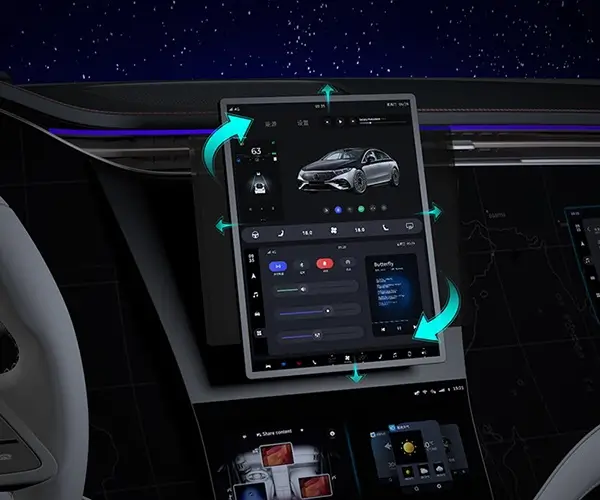Sure! Here's the first part of a soft, engaging article on "servo motor wire details." Once you review this, I can send the continuation for Part 2.

part 1:
Unlocking the Secrets of Servo Motor Wiring: A Complete Guide to Connections & Compatibility (Part 1)
Servo motors: the dynamic heartbeat of robotics, automation systems, remote-controlled vehicles, and myriad other applications. Their ability to precisely control angular position, speed, and torque makes them favorites for both hobbyists and industry professionals alike. At the core of their function lies the often-underappreciated wiring—an intricate web of signals and power that, if understood well, can vastly improve performance and reliability.
In this guide, we’ll delve into the essentials of servo motor wire details, from the basic types of connectors to the ins and outs of pin configurations, and how choosing the right wiring impacts your project. Whether you’re wiring a drone, a robotic arm, or a mini tow truck, understanding these fundamental aspects makes your setup more robust and responsive.
Understanding the Main Components of Servo Wires
Most modern servo motors come with a set of three primary wires, each serving a critical role:
Power (V+ or +): Usually a red wire, this supplies the required voltage to energize the motor. The voltage range can vary depending on the servo model, typically from 4.8V to 7.4V for standard servos, and sometimes up to 12V or more for high-torque variants. The quality of this wire and its insulation directly affects power delivery and motor longevity.
Ground (GND or -): Often black or brown, this wire completes the circuit, establishing a safe reference point for all signals and power. Proper grounding is essential to minimize electrical noise that can cause jittering or erratic movements.
Signal (PWM or control wire): Usually white, yellow, or orange, this wire carries the pulse-width modulation (PWM) signals that tell the servo how to position itself. This is the nerve center of the servo's operation, translating a control pulse into physical movement.
Wire Gauge and Its Significance
Not all wires are created equal. The gauge (thickness) of servo wires significantly influences performance. Usually, servo wire gauges range from 22 AWG to 24 AWG for most hobbyist applications. Thicker wires (like 20-22 AWG) facilitate higher current flow, reducing voltage drop during operation, especially when multiple servos are used simultaneously.
For larger, high-torque servos, or when power sources are farther away from the servo, using thicker gauge wires can prevent power loss and overheating. Conversely, in compact, lightweight setups such as drones, thinner wires like 24 AWG strike a balance between flexibility and capacity.
Connectors and Their Variations
The type of connectors used on servo wires can influence ease of assembly and reliability. Common connector types include:
JR or Futaba connectors: These are standardized in RC hobbies, with three-pin configurations and a polarized design to prevent reverse wiring.
SR or Tamiya connectors: Smaller, often used in micro servos or where space is limited.
Custom or proprietary connectors: Some high-end or industrial servos may employ unique connectors for added security or specific signal requirements.
When selecting connectors, focus on durability, compatibility, and the robustness of the locking mechanism. A good connector ensures good contact, minimizes signal noise, and reduces accidental disconnections—especially crucial in high-vibration environments.
Cabling and Shielding
While conventional servo wires are usually unshielded, certain applications—like robotics operating in electromagnetically noisy environments—benefit from shielded cables. Shielding helps prevent electromagnetic interference (EMI) from distorting control signals, which could result in jitter or loss of position accuracy.
Using twisted pairs for power and ground leads reduce electromagnetic pickup, maintaining signal integrity over longer distances. For sensitive setups, consider ferrite beads or ferrite sleeves over the cable to further suppress interference.
Color Coding and Its Importance
Staying consistent with color coding helps avoid confusion during wiring and maintenance. The common color scheme is:
Red: Power (V+) Black or Brown: Ground (GND) White, Yellow, or Orange: Signal (PWM control)
However, not all manufacturers follow these conventions strictly, so always verify the pinout before wiring. Using a multimeter to test continuity ensures correct connections before powering up the system.
Wiring Configurations & Variations
While the typical three-wire setup suffices for most applications, some advanced systems include additional features, such as:
Serial communication: In high-end servos, a four-wire setup may include an extra data line for feedback or advanced control.
Redundancy wiring: For critical applications, duplicate power or ground wires can be employed to enhance reliability.
Multiple channels: Multi-servo systems may require proper wiring management with splitters or connectors to prevent clutter and reduce connection errors.
Troubleshooting Common Wiring Issues
An error in wiring can lead to a host of problems: jittering, overheating, servo failure or unresponsiveness. Here are tips to troubleshoot:
Check polarity: Ensure power and ground are correctly connected; reversing these can permanently damage the servo.
Verify signal continuity: Use a multimeter to confirm that the signal wire isn’t broken or shorted.
Examine connector integrity: Loose or corroded connectors can cause intermittent issues—clean or replace if necessary.
Test with a known-good power supply: Sometimes, faulty power sources can mimic wiring issues.
In the next section, we will explore how to select the right wire details for different servo applications, including considerations for size, power, and operational environment, making your projects more successful and durable.
Kpower has delivered professional drive system solutions to over 500 enterprise clients globally with products covering various fields such as Smart Home Systems, Automatic Electronics, Robotics, Precision Agriculture, Drones, and Industrial Automation.




































